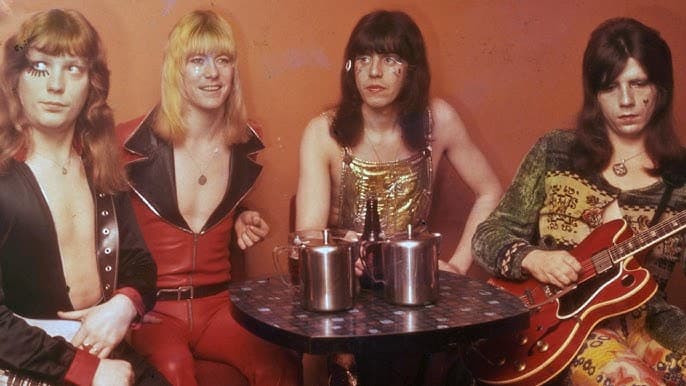
Sweet’s explosive, hard-rocking cover turns a Motown classic into a massive, unforgettable stadium anthem.
Oh, the mid-1970s. The decade was a kaleidoscope of sound and fashion, and few bands embodied its flash and thunder quite like Sweet. But even the most die-hard fan, accustomed to the irresistible crunch of songs like “Ballroom Blitz” and “Fox on the Run,” might have paused when they first heard Brian Connolly and the boys tackle a Motown classic. Their audacious, towering cover of the Four Tops’ 1966 masterpiece, “Reach Out I’ll Be There,” was a moment of true musical chutzpah—and a surprisingly successful one at that.
The track first saw the light of day on the 1974 European version of the album Desolation Boulevard and, more importantly for record collectors of the era, it later served as the B-side to one of their biggest hits, “The Ballroom Blitz,” in certain territories. Although it did not achieve a high chart position as a standalone A-side in the major markets like the U.K. or U.S., its inclusion on the album and as a B-side ensured it was heard by millions. It was a crucial piece of the Sweet puzzle, demonstrating not just their rock pedigree but their willingness to take massive risks with beloved material.
The original Four Tops rendition, penned by the legendary Holland-Dozier-Holland team, is a cornerstone of Soul music: a frantic, soaring plea of loyalty and desperate promise, driven by Levi Stubbs’ anguished, high-wire vocals. Sweet’s interpretation, however, ripped the heart right out of Hitsville U.S.A. and transplanted it squarely into the arena. This wasn’t a respectful nod; it was a complete sonic overhaul.
The meaning of Sweet’s version remains one of steadfast support and dedication, but the context is dramatically changed. Where Stubbs sounded on the verge of emotional collapse, Connolly’s vocal is a more bombastic, glam-rock shout—a confident declaration belted out from a vast stage. The story behind their decision to record it speaks volumes about the band’s self-awareness and musical scope. They were proving they could handle anything, moving beyond the Chinnichap bubblegum to assert their identity as a proper hard rock band.
What made this version so potent and memorable for those of us who grew up on their sound was the sheer, unapologetic heaviness. Andy Scott’s guitars are thick and distorted, while Mick Tucker’s drumming is a relentless, propulsive force, turning the nimble Motown rhythm into a stomping, almost metal march. That flute opening from the original? It’s replaced by a crashing wall of sound that hits you like a tidal wave. It was this boldness that cemented Sweet’s reputation as one of the most exciting and versatile bands of the era. Listening to it now, that wall of sound transports you right back to an age of flared trousers, platform boots, and volume knobs perpetually turned to eleven. It’s a testament to the fact that a great song, when handled by musicians with both talent and nerve, can truly reincarnate itself for a new generation. This wasn’t just a cover; it was a rock statement.